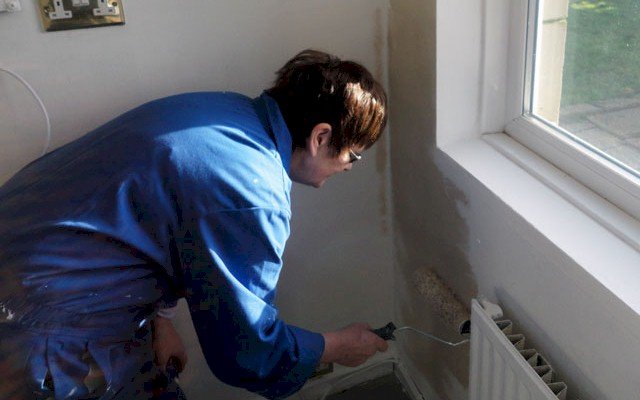
Friday, January 9th, 2026
No matter what surface you are working on there is some planning to be done before starting your painting project. DIY jobs require extensive prep work and even when you hire a painting contractor there are some decisions to make. Take a look at what needs to be done to ensure a clean, beautiful finish in your home.
The color that you choose for your walls, wood siding or doors and trim makes a big difference to the overall feel of your home. This is the major decision that homeowners know they need to make before grabbing the paint brush. But did you realize that every paint color choice is intertwined with the next one?
Decide On Your Color Scheme
A well decorated home has a good overall color scheme. The actual colors, as well as tones and shades will work together to present a beautiful finish. When you choose to paint your living rooms walls purple it somewhat limits the choices you have for paint in the kitchen. You can have a hodgepodge collection of colors, but it will seem less chaotic and flow better when you work with a color scheme.
Ask an interior designer for a color consultation. Or browse through the aisles at your local quality paint retailer that offers ready-made schemes put together by the paint manufacturers.
Preparing the Surface
A good quality paint job starts with a well prepared surface. Whether you re painting wood, drywall, plaster or any other material, you need to start with a clean slate. Any oils, dirt and grime that are left on the surface will mar the paint finish or even cause bubbling and peeling.
It s important to wash the surface thoroughly ahead of time using a degreaser (such as dish soap) or a specialty product for deep cleaning (like TSP). Be sure that you let it dry completely beforehand and that all chemicals have been rinsed away.
If you need to sand a wood surface down before painting, make sure that all of the dust has been removed from the wall or trim and the area around it. Dust sticks to wet paint well and is extremely difficult to remove.
Make Sure You Protect and Cover Everything
You only want paint to end up on the surface it s intended for. That means you need to keep the paint off of the floor, furniture and other items nearby. The best thing to do is remove as much as possible from the area, including furniture and knick knacks, fixtures and area rugs. If you can move it away, then do so.
Everything else should be covered with a light poly. This will protect the surface from drips or splattered paint and allow for easy clean up afterwards. Trim and other built in or attached elements will need to be taped up. Use a high quality painter s tape to eliminate bleeding paint and facilitate easy removal.
DIY Or Hire A Painting Contractor?
The scope of the project and the skill of the homeowner are usually the deciding factors in this debate. If the painting project is extensive, involves high ceilings, large walls or complicated procedures, the expertise of a painting contractor is invaluable. If it is a straightforward job and you have the time and skills to tackle it DIY painting is entirely possible.
You’ll need to think about these considerations no matter which option you choose. Enjoy the smoothest, sharpest finish to your painting project by covering these essentials ahead of time.
